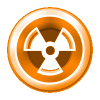Gametext: Difference between revisions
No edit summary |
No edit summary |
||
| (3 intermediate revisions by one other user not shown) | |||
| Line 1: | Line 1: | ||
'''gametext''' <tilenum> <x> <y> <quote> <shade> <pal> <[[orientation]]> <x1> <y1> <x2> <y2> | {{Deprecated}} | ||
'''gametext''' <tilenum> <x> <y> <quote> <shade> <pal> <[[orientation]]> <x1> <y1> <x2> <y2><br> | |||
'''gametextz''' <tilenum> <x> <y> <quote> <shade> <pal> <[[orientation]]> <x1> <y1> <x2> <y2> <textscale> | |||
Prints a defined quote to the screen. | Prints a defined quote to the screen. | ||
| Line 5: | Line 8: | ||
<tilenum> is the first tile of a sequence of characters. See tile 2822 for an example. | <tilenum> is the first tile of a sequence of characters. See tile 2822 for an example. | ||
<x> X coordinate, ranged 0-320 | <x> X coordinate, ranged 0-320 (divided in half so that x=319 will start in the middle of the screen; x=320 is a special case that centers the quote) | ||
<y> Y coordinate, ranged 0-200 | <y> Y coordinate, ranged 0-200 | ||
| Line 13: | Line 16: | ||
<shade> and <pal> are obviously shade and palette. | <shade> and <pal> are obviously shade and palette. | ||
<[[orientation]]> controls the way the sprite is drawn (see entry). Note: | <[[orientation]]> controls the way the sprite is drawn (see entry). Note: It is recommended that you always include bit 16 so that the letters will be placed correctly. | ||
<x1>, <y1>, <x2> and <y2> are boundaries on the screen that define where the text may be drawn. | <x1>, <y1>, <x2> and <y2> are boundaries on the screen that define where the text may be drawn. | ||
<textscale> is the scaling size of the text to use. 65536 is full size, 32768 is half size and 131072 is double-size. | |||
setvar x 320 // "x=320" | |||
setvar x 320 // "x=320" centers text | |||
setvar y 100 | setvar y 100 | ||
setvar shade 0 | setvar shade 0 | ||
| Line 25: | Line 29: | ||
setvar orientation 26 | setvar orientation 26 | ||
setvar TEMP 100 | setvar TEMP 100 | ||
redefinequote TEMP This is ^10red // | redefinequote TEMP This is ^10red // tints the word "red", 10 is red. | ||
'''gametext''' tilenum x y TEMP shade pal orientation ZERO ZERO xdim ydim | '''gametext''' tilenum x y TEMP shade pal orientation ZERO ZERO xdim ydim | ||
Latest revision as of 03:11, 29 August 2020
| This feature is deprecated. It's recommend not to use this feature. |
gametext <tilenum> <x> <y> <quote> <shade> <pal> <orientation> <x1> <y1> <x2> <y2>
gametextz <tilenum> <x> <y> <quote> <shade> <pal> <orientation> <x1> <y1> <x2> <y2> <textscale>
Prints a defined quote to the screen.
<tilenum> is the first tile of a sequence of characters. See tile 2822 for an example.
<x> X coordinate, ranged 0-320 (divided in half so that x=319 will start in the middle of the screen; x=320 is a special case that centers the quote)
<y> Y coordinate, ranged 0-200
<quote> is the quote to print, as defined by definequote.
<shade> and <pal> are obviously shade and palette.
<orientation> controls the way the sprite is drawn (see entry). Note: It is recommended that you always include bit 16 so that the letters will be placed correctly.
<x1>, <y1>, <x2> and <y2> are boundaries on the screen that define where the text may be drawn.
<textscale> is the scaling size of the text to use. 65536 is full size, 32768 is half size and 131072 is double-size.
setvar x 320 // "x=320" centers text setvar y 100 setvar shade 0 setvar pal 0 setvar tilenum STARTALPHANUM setvar orientation 26 setvar TEMP 100 redefinequote TEMP This is ^10red // tints the word "red", 10 is red. gametext tilenum x y TEMP shade pal orientation ZERO ZERO xdim ydim
Please note that as with digitalnumber, digitalnumberz, gametextz, minitext and friends, gametext only works during events.

